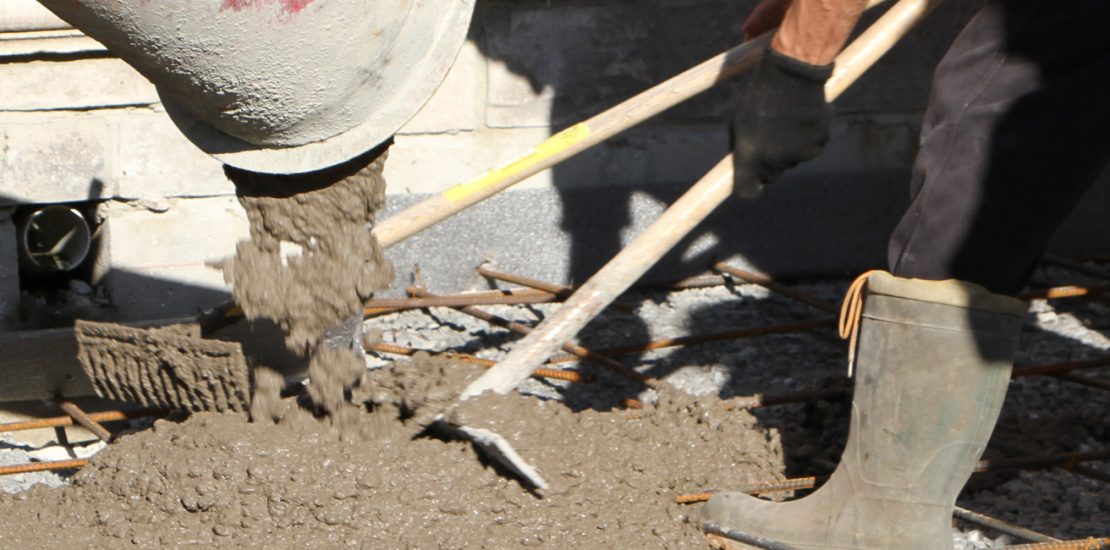August 10, 2017 / By Groupa Concrete
You’ve gone over the quote, signed the contract and paid the deposit for your concrete project. For many, concrete work is not an everyday event and so, the proceedings of such a job are foreign in their nature. In today’s blog, we’re going to be taking a look at what the various steps used for pouring stamped concrete.
Before any concrete can be poured, any interlock, asphalt or old concrete needs to be first demolished in order to make room for the new project. Once this is achieved the forms need to be placed for the new project in order to get the shape desired. Reinforcing steels bars or rebar are also added at this stage in order to help prevent cracking, increase impact resistance and reduce joint maintenance. In addition to the rebar, gravel is also laid down to provide the concrete with a level surface, allow for water drainage and avoid settlement cracks.
The pouring itself will start early in the morning, some contractors will have been up and at work as early as 5 am in order to make sure all rebar and gravel underneath is levelled properly for even concrete distribution. Concrete is generally poured early in the day or at night in order for it to not dry too quickly and thus, lose strength in the process. As soon as the concrete truck begins to pour, it is essential that work to distribute it evenly begins immediately. A marker will be used during this time to ensure that the concrete is level all throughout.
Once the distribution of the concrete has been deemed to be even, it needs to be smoothed out. This requires a variety of tools such as a screed, bullfloat, and trowels to accomplish. Special care needs to be taken if the weather is very hot, in order to achieve its maximum strength, concrete needs to dry as an even pace.
The concrete is stiff enough to stamp when you can place your hand on it and feel the strength of impression required to make a mark on the surface. At this point, the colour hardener is placed. This can be done in a variety of methods, one of the more preferred is powdered release. As release is spread on the surface, the stamping can begin. During the stamping process, special care is taken to ensure the pattern chosen is placed in a realistic manner.
When stamping is completed, the concrete will need to cure before cutting and sealing can occur. Proper curing time is vital since this is when the various properties in the concrete develop which allow it to achieve its maximum strength. For this reason, the amount of water in the concrete needs to be measured precisely and cannot be poured in the rain, to begin with. Cutting contraction joints into the concrete occurs after the concrete is cured and is what ensures that stress relief is provided at specified locations so that random cracking is avoided.
The final step, as mentioned above, is sealing. Sealing is perhaps one of the most crucial steps regarding the aesthetic of the job because it is what not only adds a sheen to it and enriches the colour of the concrete, but also helps prevent efflorescence from forming.
During this whole process, concrete is messy, especially when dealing with release powder. You can rest easy, however, for this is only temporary and made note of here as a precaution to know what you should expect. It can also be very loud at early hours in the morning due to concrete trucks and potential generators going where power is not readily available to contractors to run their tools, the reason for this being that it is better to pour concrete earlier in the day.
If you have any further questions or concerns about the concrete construction process, feel free to contact our team at Groupa Concrete.


